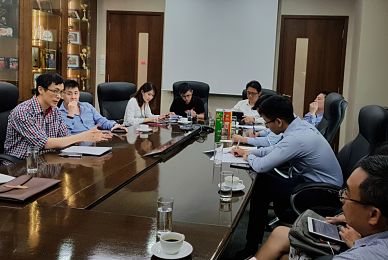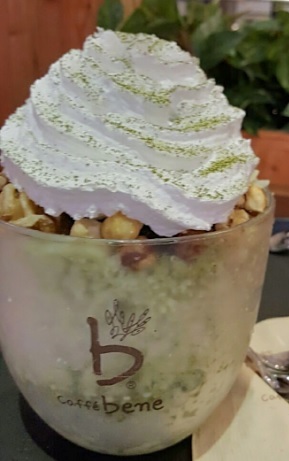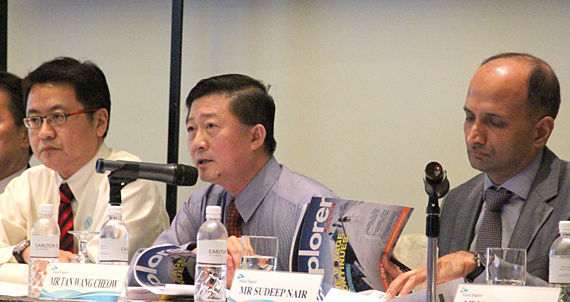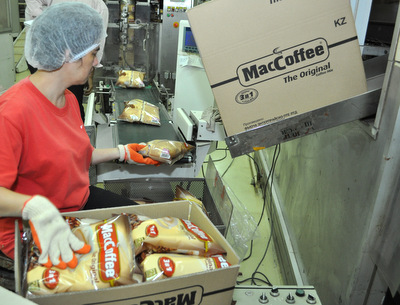|
The core net profit Food Empire earned in 2017 (US$21.0 million) matched that in 2012 (US$20.5 million). |
 Photo: Company
Photo: Company Chin Tze Ting (far left) of Food Empire discussing FY17 results with analysts and investors last week.
Chin Tze Ting (far left) of Food Empire discussing FY17 results with analysts and investors last week.
NextInsight photo.These upstream factories, happily, reached utilisation rates of around 80% in 2017. There is some upside left but not a whole lot of it.
This rapid rise in utilisation was due to the fact that Food Empire could either sell to third parties or use the products internally, which effectively de-risked the projects.
By using its self-produced instant coffee and non-dairy creamer for its 3-in-1 coffee products, Food Empire enjoyed cost savings.
Its gross margin rose from an already respectable 36.1% in 2016 to 38.3% in 2017.
With the experience from setting up and operating these plants, Food Empire plans to build another instant coffee plant, also in India.
The product would be freeze-dried coffee, which is of higher premium than the spray-dried coffee it currently produces.
|
Food Empire |
|
|
Share price: |
Target: |
|
Source: RHB Research |
|
The new plant will cost US$50 million and is expected to start operations in 2020.
Until that spurt of growth kicks in, Food Empire's stability and momentum look set to continue.
There would be upside if the ruble strengthens further vis-a-vis the USD. The exchange rate now: 57 rubles to a USD compared to 32 rubles to a USD in 2012.
Food Empire, in its FY17 results statement, has completely written off its investment in South Korea's coffee chain, Caffe Bene, whose fate is now before the Korean courts.  Caffe Bene: Sweet life with a bitter end? NextInsight file photo.It boils down to Caffe Bene being either allowed to continue as a going concern (which then requires creditors to take haircuts) or liquidated. Caffe Bene: Sweet life with a bitter end? NextInsight file photo.It boils down to Caffe Bene being either allowed to continue as a going concern (which then requires creditors to take haircuts) or liquidated. If it's liquidated, it would be a bitter end to a brand that was enormously popular in Korea at its peak. It would be doubly tragic because of its short life (it was founded in 2008), not an uncommon occurence that happens to people in South Korean serial dramas. Meanwhile, Food Empire is well into its third decade, and sports a market cap of S$366 million (stock price: 69 cents). |
For details of the FY17 results, click here.







